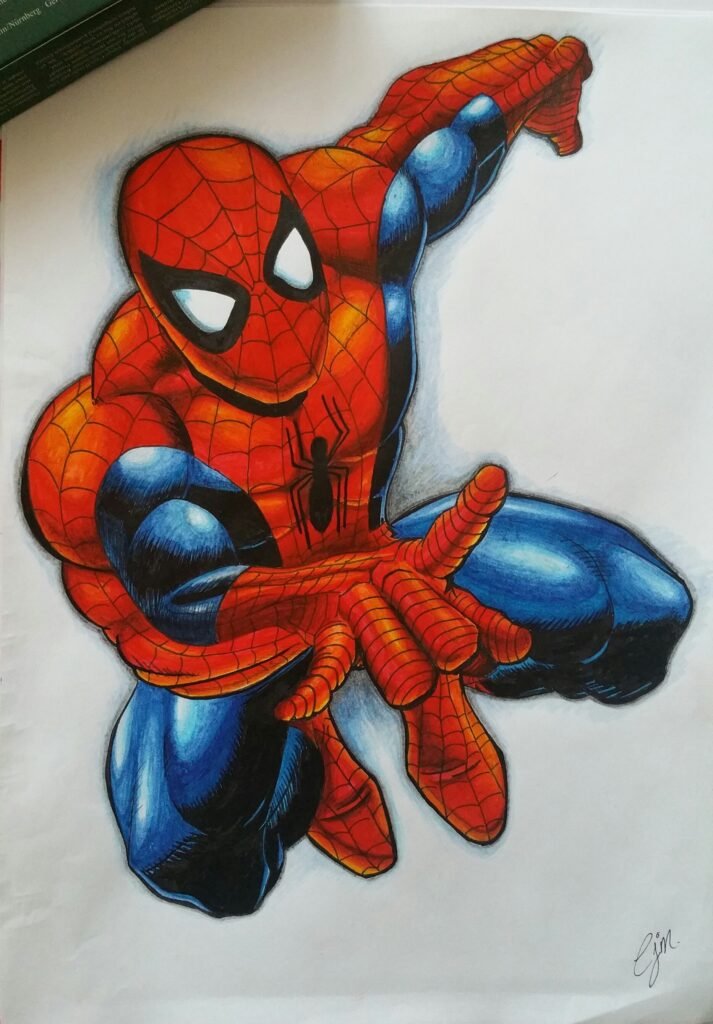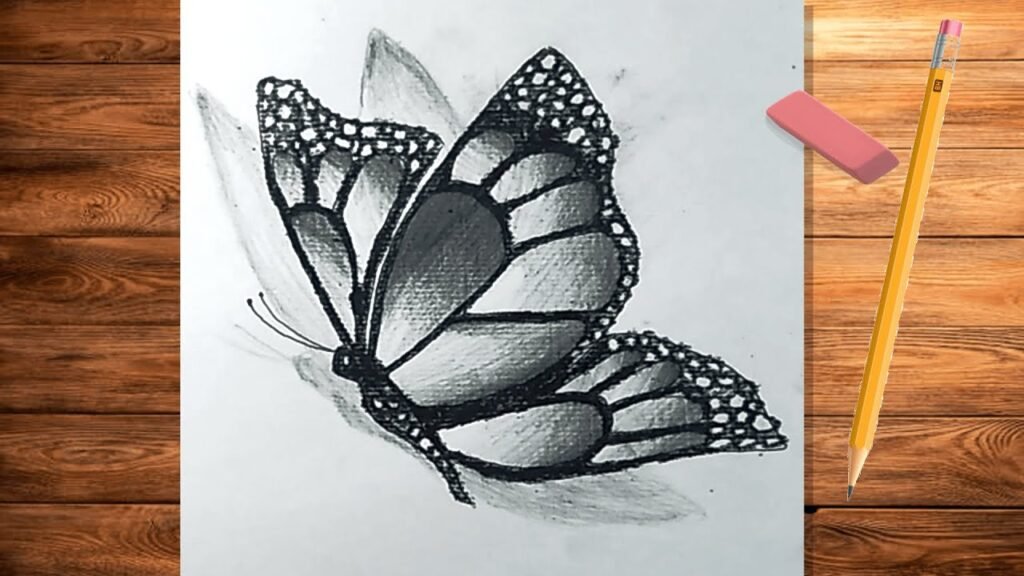Introduction to Drawing Spider-Man
Drawing:Cuyvl6drpxk= Spider Man: Drawing Spider-Man is an exhilarating journey that combines creativity with a touch of superhero magic. Whether picking up a pencil for the first time or looking to refine your skills, this iconic character offers something for everyone. With his dynamic poses and intricate costume details, Spider-Man invites artists of all levels to explore their imagination.
Imagine swinging through the streets of New York City alongside our favorite web-slinger as you bring him to life on paper. This guide will help you navigate the world of drawing: cuyvl6drpxk= Spider-Man, providing tips and techniques for beginners and experts alike. Get ready to unleash your inner artist and create your version of this beloved hero!
The Basics of Drawing: Understanding Shapes and Proportions

Understanding shapes and proportions is essential for any artist. Every character, including Spider-Man, starts with elemental geometric forms. These simple shapes serve as the foundation of your drawing.
Begin with circles for the head and joints. Use ovals for limbs and the torso. This creates a structure to build upon later. Proportions are equally critical; they determine how realistic your figure will look.
Observe actual human anatomy or reference images of Spider-Man in various poses to achieve accurate proportions. Notice how limbs relate to each other in size and placement.
Sketch lightly at first, allowing adjustments without frustration. As you refine your lines, remember that every superhero has unique characteristics—even their proportions can be exaggerated to enhance their dynamic appearance.
Mastering these basics unlocks immense potential for creativity in your artwork. They also set the stage for more intricate techniques later on.
Step-by-Step Guide for Beginners: Drawing spider-man I’s Head, Body, and Costume
Start by sketching a simple oval for Spider-Man’s head. This will serve as the foundation of your drawing. Next, add guidelines to help position his facial features accurately.
For the body, create an essential stick figure using straight lines. Ensure you capture Spider-Man’s dynamic pose—he’s always on the move! Gradually flesh out the limbs with rounded shapes, giving them depth and volume.
Now it’s time for his iconic costume. Draw web patterns across the torso and arms; these details make him instantly recognizable. Don’t forget to include Spidey’s emblem on his chest—it adds character.
Focus on proportions while connecting different elements smoothly. As you refine each section, remember that practice makes perfect! Keep layering until you’re satisfied with how he looks before moving on to color or shading techniques later.
Drawing:Cuyvl6drpxk= Spider Man

Embarking on the journey of drawing Spider-Man opens up a world of creativity and fun. His iconic silhouette is instantly recognizable, making him a fantastic subject for artists at any level.
Start by breaking down his form into basic shapes. A circle for the head, rectangles for limbs, and ovals can help establish proportions early on. This foundation will guide you as you define his dynamic pose.
When working on Spider-Man’s costume, pay close attention to the web patterns. They add character but can be intricate—take your time with them to ensure accuracy.
Consider experimenting with various mediums, such as pencils or digital tools, to enhance your artwork further. Each medium offers unique textures that can bring Spidey’s vibrant colors to life while also giving depth to your creation.
Tips for Adding Depth and Detail to Your Drawing
To breathe life into your Spider Man drawing, depth and detail are crucial. Start with shadows; they create a three-dimensional effect. Identify where your light source is coming from and darken areas away from it.
Textures can elevate your artwork. Focus on Spider Man’s suit—use short, sharp strokes to mimic the webbing texture. This brings realism while maintaining style.
Remember facial features! Subtle highlights in the eyes can express emotion, and a hint of shine on his lenses makes them pop.
Layering colors is another way to add richness. He uses different shades for his costume to convey fabric folds or movement.
Incorporate dynamic lines that suggest action or motion around him. It adds energy and excitement to the piece, making it more engaging for viewers who appreciate art’s storytelling potential.
Leveling Up: Advanced Techniques for Expert Drawers
Mastering advanced techniques is key to elevating your Spider-Man drawings. Start by experimenting with dynamic poses. Use reference images or action figures to capture movement and energy, which will breathe life into your illustrations.
Next, play with perspective. Foreshortening can create dramatic effects, making Spidey appear as if he’s leaping off the page. Practice drawing from various angles to enhance depth.
Incorporate shadowing and highlights for a more three-dimensional look. Understanding light sources adds realism and enhances the overall impact of your artwork.
Consider studying anatomy in detail. A more profound knowledge of human form will refine muscle structure in your character’s physique, giving Spider-Man an incredibly believable presence on paper.
These advanced strategies can transform good work into stunning pieces that truly showcase your skills as an artist!
Using Different Mediums for Your Spider-Man Artwork
Exploring various mediums can elevate your Spider-Man artwork. Each offers a unique flair, allowing for creativity to shine through.
Pencil and charcoal are excellent for capturing fine details. The soft lines create depth and texture, perfect for shading Spidey’s iconic costume.
Markers add vibrancy. They bring bold colors to life, making Spider-Man pop off the page. Experiment with blending techniques for dynamic effects.
Watercolors provide a different atmosphere altogether. Their fluidity captures movement beautifully, which is ideal for the action poses of our favorite web-slinger.
Digital art is another exciting avenue. Software like Procreate or Adobe Illustrator allows endless adjustments and enhancements without the mess of traditional materials.
Each medium has its strengths and weaknesses, so don’t hesitate to mix them up! Combining styles may produce unexpected results that enhance your artistic expression while drawing Cuyvl6drpxk= Spider-Man.
Conclusion: Drawing: Cuyvl6drpxk= Spider-Man
Drawing Spider-Man can be an exciting journey for both beginners and experts. Whether you’re just starting or looking to refine your skills, there are endless opportunities to explore this iconic character’s dynamic poses and intricate details.
Mastering the basics is essential for beginners. Understanding shapes and proportions sets a solid foundation for any drawing project. Following step-by-step guides allows you to build confidence while creating recognizable forms of Spider-Man.
As you progress, adding depth with shading brings your artwork to life. This adds a dimension that makes your drawings pop off the page. Experimenting with various mediums, from traditional pencils and inks to digital tools, opens new avenues for creativity.
Expert drawers have much room for growth, too! Techniques like gesture drawing or studying anatomy deepen their understanding of movement and structure in comic art.
No matter where you stand in your artistic journey, exploring “drawing:cuyvl6drpxk= spider man” will lead you down an inspiring path filled with creativity and expression. Embrace each stroke as part of your unique artistic voice, allowing it to evolve as you bring this beloved superhero into existence on paper ai.




Pingback: Pro Tips for Drawing:5dlmdowxula= Butterfly